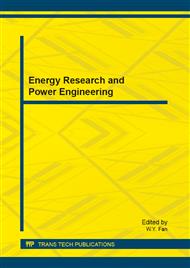[1]
A. Podol'Skii, Design procedure for permanent magnet assemblies with uniform magnetic fields for MRI devices, IEEE Trans Magn, vol. 36(02), (2000)484-490.
DOI: 10.1109/20.825819
Google Scholar
[2]
Dong-Hun Kim, Byung-Sung Kim, Joon-Ho Lee, Wan-Soo Nah, and Il-Han Park, 3-D optimal shape design of ferromagnetic pole in MRI magnet of open permanent-magnet type, IEEE Trans Appl Supercond, vol. 12(01), (2002)1467-(2002).
DOI: 10.1109/tasc.2002.1018679
Google Scholar
[3]
L. Sanchez, F. Liu, E. Weber, S. Crozier, Passive shim design and a shimming approach for biplanar permanent magnetic resonance imaging magnets, IEEE Trans Magn, vol. 44(03), (2008)394-402.
DOI: 10.1109/tmag.2007.914770
Google Scholar
[4]
Tony Tadic, Gino Fallone, Design and optimization of a novel bored biplanar permanent-magnet assembly for hybrid magnetic resonance imaging systems, IEEE Trans Magn, vol. 46(12), (2010) 4052-4058.
DOI: 10.1109/tmag.2010.2074208
Google Scholar
[5]
Tony Tadic, Gino Fallone, Three dimensional non- axisymmetric pole piece shape optimization for biplanar permanent magnet MRI systems, IEEE Trans Magn, vol. 47(01), (2011)231-239.
DOI: 10.1109/tmag.2010.2085049
Google Scholar
[6]
Jae Seop Ryu, Yingying Yao, Chang Seop Koh, Sonam Yun, and Dong Soo Kim, Optimal shape design of 3D nonlinear electromagnetic devices using parameterized design sensitivity analysis, IEEE Trans Magn, vol. 41(05), (2005)1792–1795.
DOI: 10.1109/tmag.2005.845982
Google Scholar
[7]
Xiaohua Jiang, Guanghui Shen, Yongchuan Lai, and Jinfeng Tian, Development of an open 0. 3 T NdFeB MRI magnet, IEEE Trans Appl Supercond, vol. 14(02), (2004)1621-1623.
DOI: 10.1109/tasc.2004.831015
Google Scholar
[8]
Pingchou Xia. Permanent magnet mechanism. Beijing: Beijing industrial university press. 2000, pp.91-92.
Google Scholar
[9]
J. H. Holland, Adaptation in Natural and Artificial Systems, Ann Arbor, Michigan: University of Michigan Press, (1975).
Google Scholar
[10]
Bingzhong Wang. Computational electromagnetics. Beijing: Science Press. 2002, pp.333-334.
Google Scholar
[11]
De Jong Ka, An analysis of the behavior of a class of genetic adaptive systems, Michigan: University of Michigan, (1975).
Google Scholar
[12]
W. M. Spears, A. Deiongk, An analysis of multipoint crossover. The Proceeding 1990 Workshop of the Foundations of Genetic Algorithms, (1990)301-315.
Google Scholar
[13]
William Hoa, George T.S. Hob, Ping Jib, Henry C.W. Lau, A hybrid genetic algorithm for the multi-depot vehicle routing problem, Engineering Applications of Artificial Intelligence, vol. 21(04) , (2008)548-557.
DOI: 10.1016/j.engappai.2007.06.001
Google Scholar


